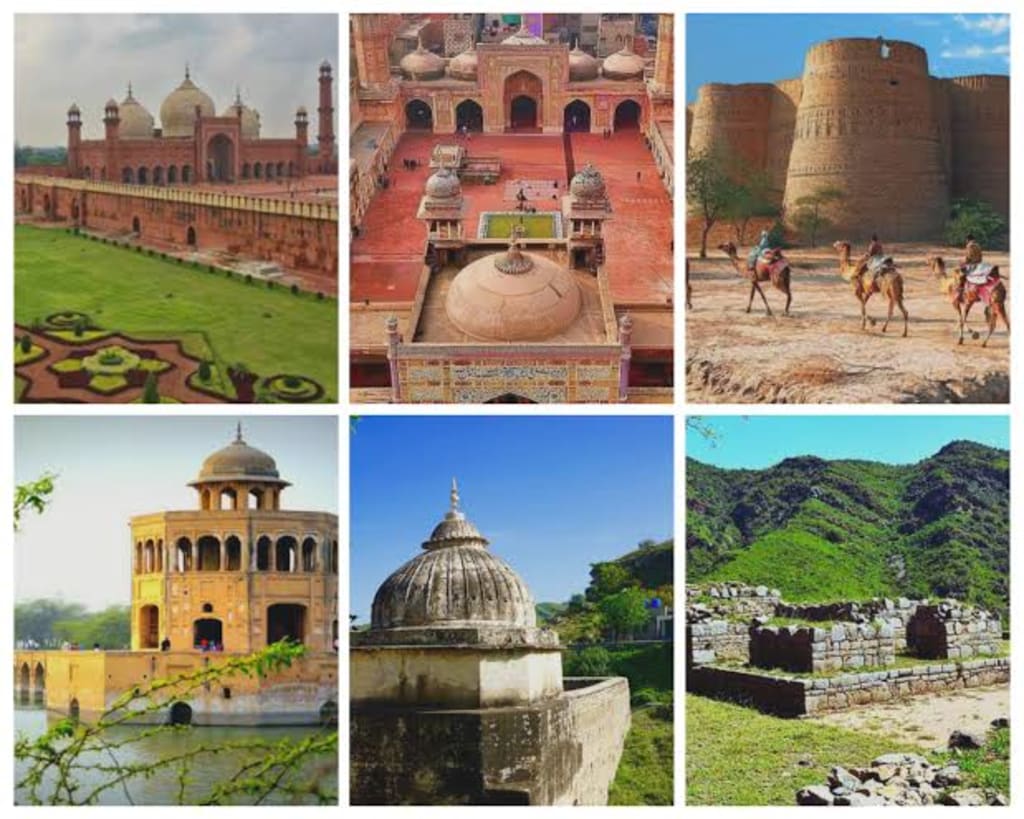Pakistan: A Historical Journey
History of Pakistan

Introduction:
Pakistan, a nation in South Asia, has a rich and diverse history that has shaped its identity as an independent and sovereign state. From its creation in 1947 to the present day, Pakistan has experienced significant milestones, challenges, and transformations. This article provides an overview of Pakistan's historical journey, highlighting key events and developments up until May 23, 2023.
Independence and Early Years (1947-1958):
Pakistan emerged as an independent state on August 14, 1947, following the partition of British India. Muhammad Ali Jinnah, the founding father and the first Governor-General of Pakistan, played a crucial role in shaping the new nation. The early years were marked by efforts to establish governance structures, draft a constitution, and address the challenges of mass migration and communal violence.
Political Evolution and Challenges (1958-1971):
In 1958, Pakistan experienced its first military coup, which led to a decade-long period of military rule. Despite progress in economic development and infrastructure, political instability, and regional tensions, particularly with India, posed significant challenges. East Pakistan (present-day Bangladesh) sought greater autonomy, leading to a violent conflict that resulted in East Pakistan's secession and the formation of Bangladesh in 1971.
Zulfikar Ali Bhutto and the Rise of Populism (1971-1977):
Following the political turmoil, Zulfikar Ali Bhutto emerged as a prominent political figure and the founder of the Pakistan People's Party (PPP). Bhutto's government implemented significant social and economic reforms, including nationalization of industries and land reforms. However, allegations of corruption and authoritarianism marred his tenure, and he was overthrown in a military coup in 1977.
Zia-ul-Haq and the Islamization Era (1977-1988):
General Muhammad Zia-ul-Haq assumed power after the coup, ushering in an era of Islamization and conservative policies. His government implemented various measures to Islamize the society and introduced changes in the legal system. However, this period also saw a rise in extremism and the Afghan-Soviet war, which had significant repercussions for Pakistan.
Benazir Bhutto and Nawaz Sharif Era (1988-1999):
In 1988, Pakistan witnessed its first-ever female Prime Minister, Benazir Bhutto, daughter of Zulfikar Ali Bhutto. Her government aimed to address economic challenges, promote democracy, and improve social conditions. However, political instability, corruption allegations, and power struggles hindered the progress. She was succeeded by Nawaz Sharif, who also faced similar challenges during his tenure.
Musharraf's Rule and the War on Terror (1999-2008):
In 1999, General Pervez Musharraf seized power in another military coup. His rule was marked by economic reforms, modernization initiatives, and a strategic alliance with the United States in the global War on Terror. However, his regime faced opposition and controversy, including the Lal Masjid Operation and the assassination of Benazir Bhutto in 2007.
Transition to Democracy (2008-2018):
The year 2008 witnessed a transition to democracy, with the Pakistan People's Party (PPP) and Pakistan Muslim League-Nawaz (PML-N) alternating in power. The PPP's government, led by Benazir Bhutto's husband Asif Ali Zardari, focused on democracy consolidation, socio-economic development, and counterterrorism efforts. The PML-N's government, led by Nawaz Sharif, prioritized infrastructure development and economic growth. However, both governments faced challenges, including corruption allegations and security concerns.
Recent Developments and Challenges (2018-2023):
In the 2018 general elections, Imran Khan's Pakistan Tehreek-e-Insaf (PTI) emerged as the ruling party, promising anti-corruption measures, economic reforms, and social justice. Khan assumed office as the 22nd Prime Minister of Pakistan. His government focused on austerity measures, poverty alleviation, and attracting foreign investment. However, Pakistan faced challenges such as economic instability, inflation, and regional tensions, particularly with India and Afghanistan.
Conclusion:
Pakistan's historical journey until May 23, 2023, is characterized by a series of significant events, challenges, and transformations. From its independence to the present day, Pakistan has experienced political evolution, military rule, periods of democratic governance, and economic reforms. While progress has been made in various sectors, challenges such as political instability, security concerns, and socio-economic disparities continue to shape the nation's trajectory. As Pakistan moves forward, the pursuit of stability, democracy, and inclusive development remains key to its future growth and prosperity.
About the Creator
Jeela Bhai
Enter my world of words, where stories breathe and emotions speak. I'm Jeela Bhai, a devoted blogger and storyteller on Vocal Media, inviting you to embark on an imaginative journey with me!
Enjoyed the story? Support the Creator.
Subscribe for free to receive all their stories in your feed. You could also pledge your support or give them a one-off tip, letting them know you appreciate their work.






Comments
There are no comments for this story
Be the first to respond and start the conversation.